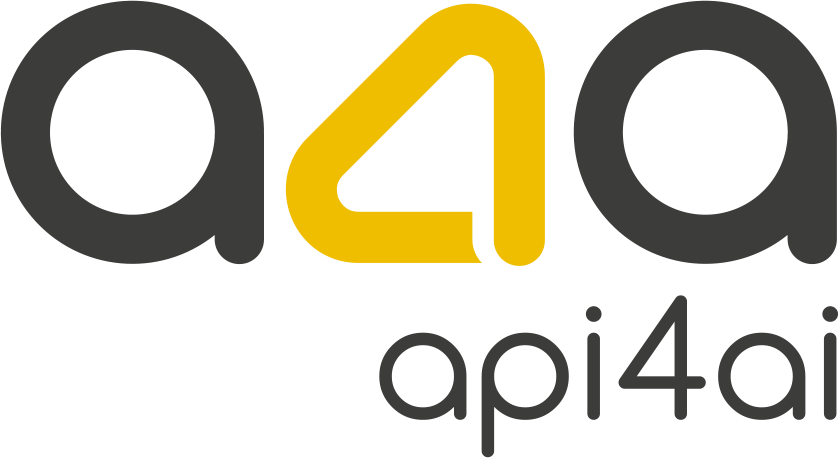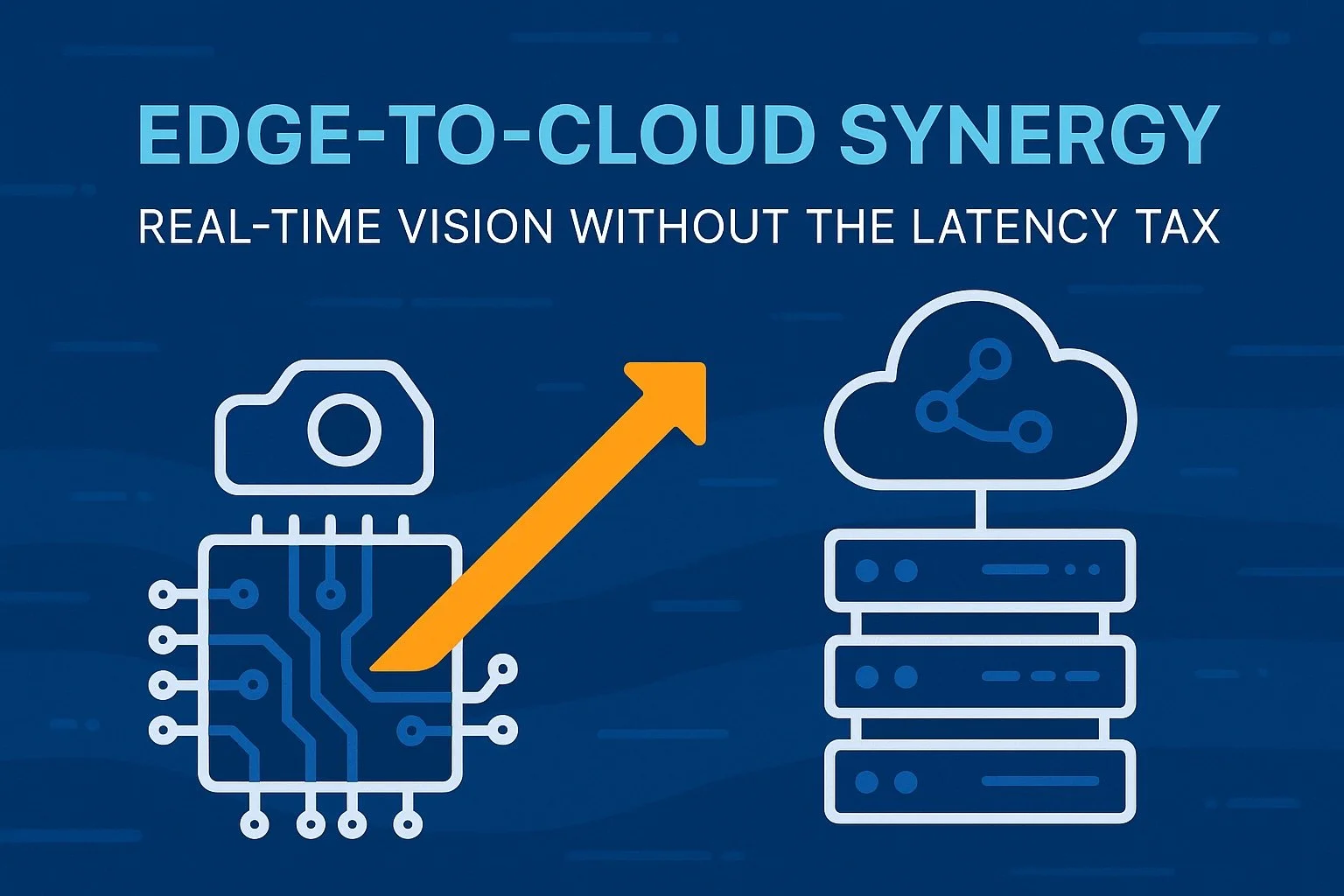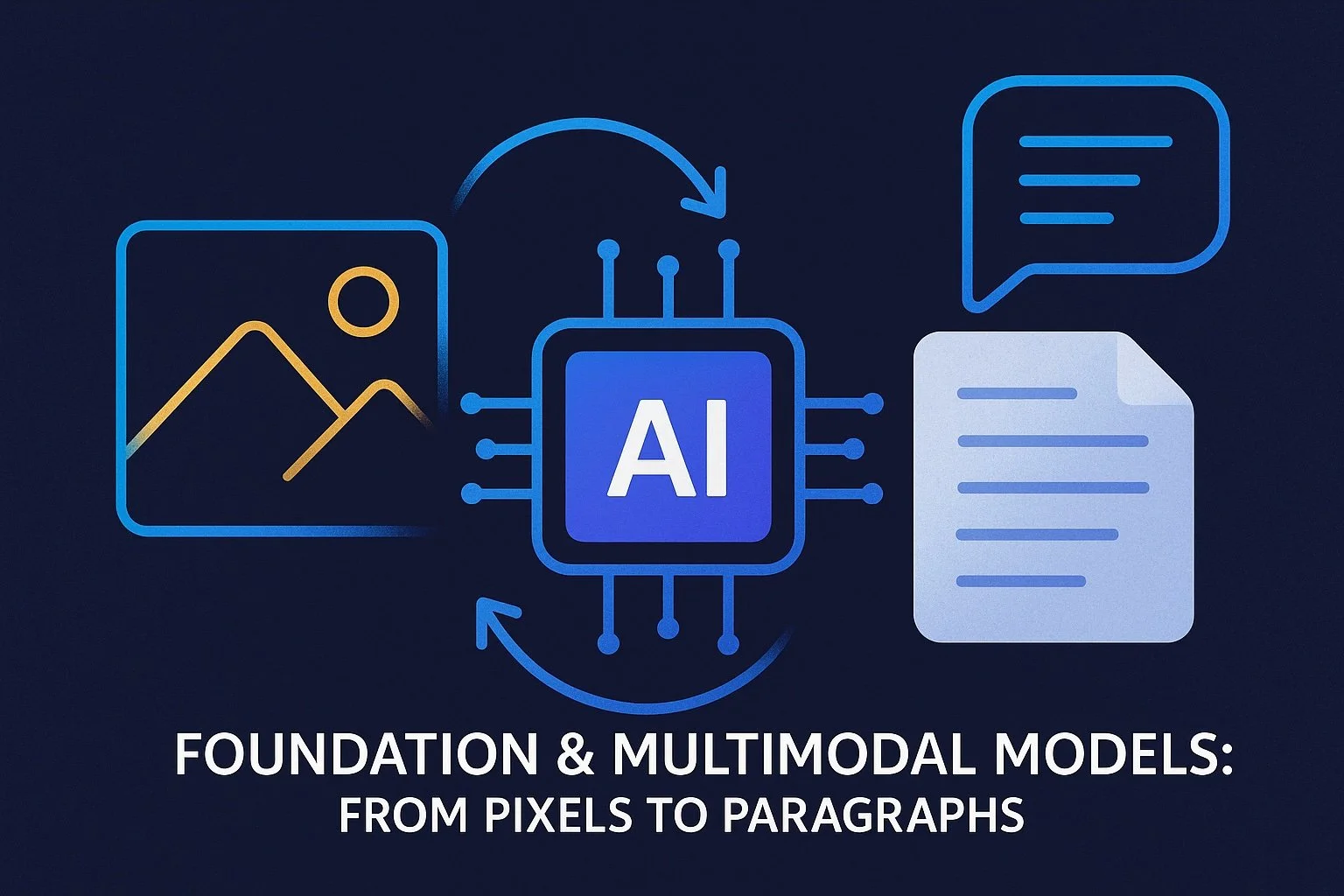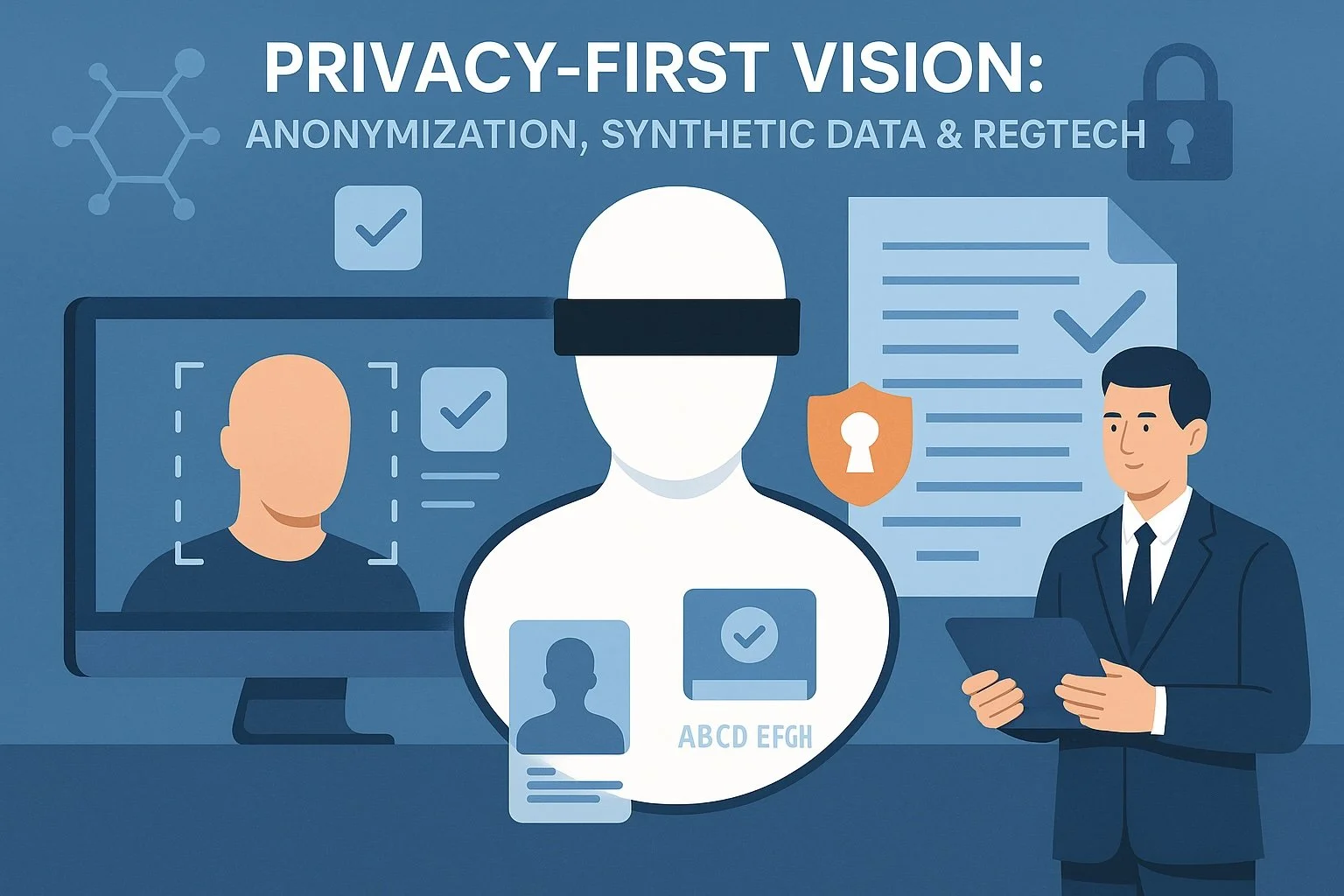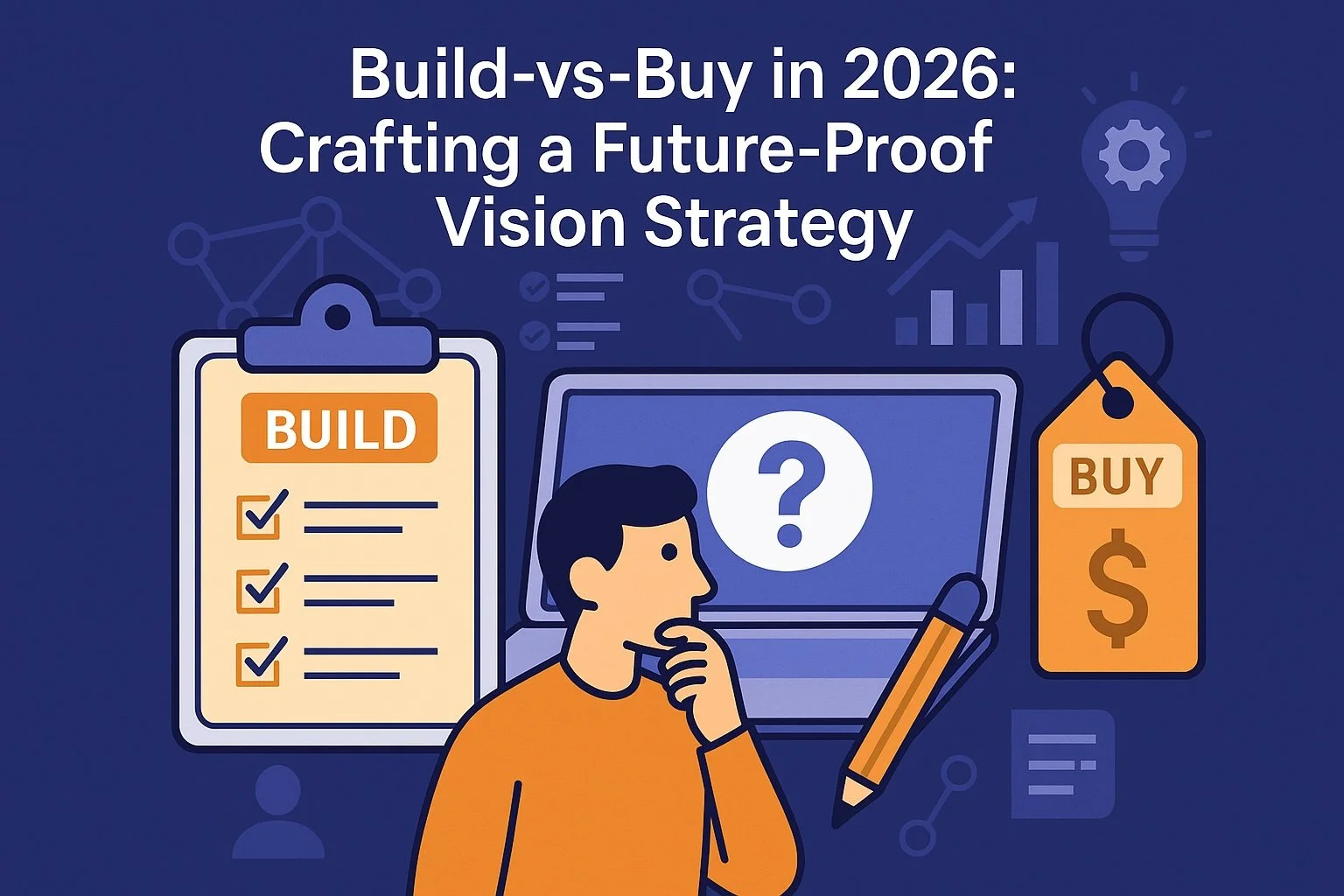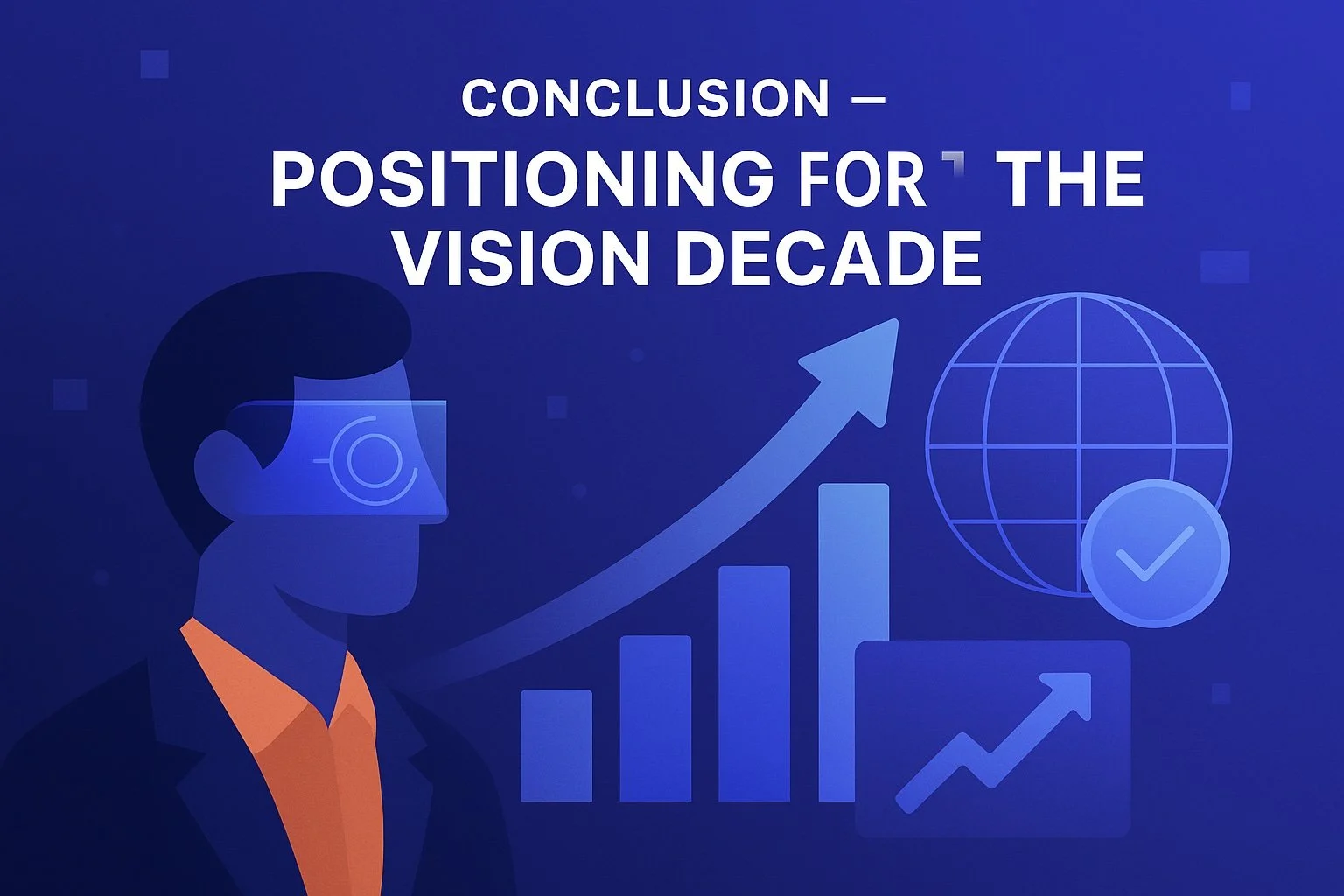Computer Vision Technologies 2026: What to Expect
Introduction — A Tipping-Point Year for Vision-Powered Business
Over the past decade, computer vision has quietly evolved from a niche technology into a powerful tool used across many industries. From self-checkout kiosks recognizing items, to facial recognition in smartphones, to visual inspection in manufacturing — this field has expanded fast. And now, as we move into 2026, the pace is only picking up.
Computer vision — the science of teaching machines to “see” and interpret images — is expected to reach a global market value of over $80 billion by 2026. Why? Because more and more businesses are realizing that visual data isn’t just a byproduct — it’s a source of valuable insight. When processed intelligently, it can drive faster decisions, automate complex tasks, and improve customer experiences. Whether it's detecting product defects in real time, verifying a customer’s identity, or automatically categorizing products in an e-commerce store, computer vision is becoming essential to staying competitive.
The rise of cloud APIs, edge computing, and powerful AI models is making these capabilities more accessible than ever before. Even small and mid-sized companies, which previously found computer vision out of reach, can now experiment with these tools at low cost and scale up as needed.
In this post, we’ll explore the major trends shaping computer vision technologies in 2026. You’ll discover how new tools are enabling real-time processing, how AI is becoming better at understanding both images and text together, and how privacy and regulation are influencing design choices. We’ll also look at which industries are benefiting the most and how companies can build a smart strategy around using off-the-shelf APIs versus custom AI development.
Whether you're a product manager, a software engineer, or an executive looking for growth opportunities, this guide will give you a clear picture of what’s ahead — and how to prepare for it.
Edge-to-Cloud Synergy: Real-Time Vision Without the Latency Tax
One of the biggest challenges in computer vision today is speed. For many applications—like detecting a defective item on a production line or identifying a security threat in real time—even a delay of one or two seconds can be too much. That’s where the combination of edge computing and cloud technologies comes into play.
What is edge-to-cloud synergy?
In simple terms, it’s about splitting the workload between two places:
Edge devices (like smart cameras, mobile phones, or on-site sensors) process visual data locally, right where it’s captured.
Cloud servers handle heavier tasks that need more computing power, such as analyzing large datasets, training models, or generating detailed reports.
Together, this setup allows businesses to process images faster, reduce the amount of data sent over the internet, and still take advantage of powerful cloud-based AI systems. It’s a smart balance between speed, accuracy, and cost.
Real-Time Vision on the Edge
Thanks to recent advances in hardware, edge devices are becoming much smarter. Small chips known as vision AI accelerators or NPUs (neural processing units) can now run lightweight AI models directly on cameras and sensors. These models are optimized for quick tasks — like detecting motion, counting objects, or identifying known patterns.
For example, a smart camera on a conveyor belt could use an object detection model to flag products with visible defects in real time, without sending each image to the cloud. That saves bandwidth and avoids delays.
Cloud for Deeper Insights
The cloud still plays an important role. More complex tasks — like recognizing brand logos across thousands of images, or analyzing trends over time — are often better handled by cloud-based systems, which offer more processing power and scalability.
For example, a company might use a cloud-based Object Detection API to process a batch of product images from multiple retail locations. The edge device can capture and filter the images, while the cloud API handles detailed recognition and classification.
Use Case Example
Imagine a logistics company tracking packages across its network. Cameras on delivery trucks use edge-based vision to instantly check if a box is properly loaded. At the same time, high-resolution images are sent to the cloud, where a Background Removal API cleans the visuals before storing them in the customer portal. This combination ensures both fast decisions on the ground and high-quality records in the cloud.
Benefits of the Edge-Cloud Approach
Speed: Reduce latency and respond in milliseconds.
Efficiency: Avoid sending unnecessary data to the cloud.
Scalability: Use the cloud to manage large volumes of data when needed.
Flexibility: Easily update models and workflows through cloud APIs.
Why It Matters for 2026
As 5G networks expand and hardware becomes cheaper, edge-to-cloud computer vision will become the new normal. Businesses will no longer have to choose between fast local results and powerful centralized processing — they can have both.
In this evolving landscape, having access to modular, cloud-ready APIs — like object detection, face recognition, or product labeling — gives companies the freedom to experiment quickly and scale when ready. This synergy will be one of the key trends shaping how organizations deploy computer vision in 2026 and beyond.
Foundation & Multimodal Models: From Pixels to Paragraphs
Computer vision is no longer just about recognizing objects in an image. In 2026, we’re seeing a major shift toward foundation models and multimodal AI, which can understand both images and text — and even generate descriptions, labels, or decisions based on that combined understanding.
This trend is making computer vision smarter, more flexible, and much easier to use, even without large amounts of training data.
What Are Foundation Models?
Foundation models are large, pre-trained AI models that can be adapted to many tasks. Instead of training a new model from scratch for every use case, businesses can now start with a general-purpose model and fine-tune it for their needs.
In computer vision, examples of foundation models include:
Vision Transformers (ViTs) – these models see and understand images in a way that’s more similar to how natural language models work.
SAM (Segment Anything Model) – a model that can segment (cut out) any object in an image, even without specific training for that object.
CLIP – a model that links images and text, allowing you to search for images based on natural language prompts.
These models are trained on huge datasets — millions or even billions of images — so they already know how to recognize many common objects, scenes, and patterns.
Enter Multimodal AI: Understanding Images and Text Together
Multimodal models go a step further. They process both visual and textual data at the same time. For example, you can ask them questions about an image, and they’ll respond with a relevant answer. Or, they can generate captions, classify images based on descriptions, and even suggest decisions using both types of input.
Here’s a simple example:
Show the model a photo of a bottle, and ask: “Is this a wine or a soda?”
The model understands both the image and your question — and gives a reliable answer.
This opens up powerful new capabilities for businesses. You can automate tasks like:
Writing product descriptions based on images.
Tagging thousands of images with relevant categories.
Detecting items that match certain search terms — even if those items were never directly trained into the system.
How Businesses Can Benefit
These new models make it much easier to launch smart image-based features without building a massive dataset or AI team. For example:
A retailer can use an Image Labeling API to tag and organize large image libraries with minimal human effort.
A logistics platform can combine OCR (Optical Character Recognition) and Object Detection to automatically extract product IDs and match them with packaging visuals.
A brand monitoring team can use a Logo Recognition API to track where their brand appears — even in new, unexpected contexts.
For specialized needs, businesses can start with these pre-trained models and fine-tune them using their own images and language — without needing millions of data points. This hybrid approach combines the speed of APIs with the customization of private models.
Why It Matters in 2026
In 2026, the growing availability of foundation and multimodal models will make it easier than ever to integrate AI into everyday operations. These tools lower the barrier to entry, reduce development time, and enable new levels of automation.
Whether you’re managing content, inspecting products, analyzing scenes, or building a better user experience, these models give you a flexible starting point. Combined with cloud APIs that support tasks like labeling, recognition, and classification, they offer a practical way to bring advanced AI into your business — without having to reinvent the wheel.
Privacy-First Vision: Anonymization, Synthetic Data & RegTech
As computer vision becomes more powerful and widespread, concerns about privacy and compliance are growing. In 2026, businesses using AI to process images and videos must think not only about what their systems can do — but also what they are allowed to do.
Governments and regulators are introducing stricter rules around how personal visual data is collected, stored, and analyzed. At the same time, users are becoming more aware of their digital rights. This means that companies must build privacy-first computer vision systems that are safe, ethical, and legally compliant from the ground up.
The Role of Anonymization
Anonymization is one of the key tools in privacy-first computer vision. It means removing or hiding sensitive information from images — such as faces, license plates, or other identifying features — before that data is stored or processed further.
This can be done in several ways:
Blurring faces or objects.
Masking specific areas of an image.
Removing backgrounds that might contain private environments.
For example, a company using street-level cameras for traffic analysis may use an Image Anonymization API to blur all human faces and vehicle plates in real time before storing the footage. This protects individual privacy while still allowing the business to gather useful information.
For content moderation or online platforms, NSFW Recognition APIs help automatically flag or block inappropriate content, making platforms safer and more compliant with regional regulations.
Meeting Global Regulations (RegTech + Vision AI)
In 2026, privacy regulations are becoming stricter and more widespread:
Europe’s GDPR and the Digital Services Act (DSA) are enforcing stronger rules on visual data usage and AI transparency.
U.S. states like California and Colorado are introducing detailed AI privacy laws.
Other regions are building similar rules to protect users and limit surveillance misuse.
To meet these standards, companies must adopt RegTech solutions — technologies designed specifically to support regulatory compliance. In computer vision, this includes:
Anonymization tools.
Consent-based data collection systems.
Transparent AI logs that show how decisions are made.
AI models that can explain their outputs.
By integrating these features into their vision pipelines, businesses not only reduce legal risks but also build trust with their users.
Synthetic Data: A Safe Way to Train AI
Another powerful trend is the use of synthetic data — artificially generated images used to train or test computer vision models. These images can be created using 3D rendering, simulation environments, or generative AI models.
Why is this important for privacy?
Because synthetic data:
Doesn’t come from real users.
Doesn’t contain any personal information.
Can be produced in large quantities, covering rare or edge cases.
For example, a company developing a Face Recognition API could use synthetic faces to train the system on different lighting conditions, angles, and expressions — without ever using real people’s data.
Synthetic data is also useful when collecting real-world images would be too expensive, risky, or legally restricted.
Why It Matters in 2026
In the years ahead, the companies that succeed in computer vision will not just be the ones with the smartest algorithms — they’ll be the ones who use AI responsibly.
By investing in anonymization, adopting RegTech tools, and using synthetic data when possible, businesses can unlock the power of visual intelligence while staying on the right side of the law. And with ready-to-use APIs like Image Anonymization, NSFW Recognition, and OCR, it's easier than ever to build privacy-first workflows that scale with confidence.
In short, privacy is no longer a nice-to-have — it’s a competitive advantage.
Sector Spotlight 2026 — Where Vision Is Printing ROI
Computer vision is not just a promising technology — it’s already driving real business results across many industries. In 2026, we’re seeing more companies move from testing and pilot phases to full-scale deployment of vision-powered solutions.
This section takes a closer look at how computer vision is being used in key sectors today, and what kind of return on investment (ROI) it brings. Each industry has its own challenges, but one thing is clear: when vision AI is applied thoughtfully, it improves efficiency, reduces errors, and often lowers long-term costs.
🛍 Retail & E-Commerce: Smarter Stores, Better Search
In retail, computer vision is helping both in physical stores and online platforms.
Key uses in 2026 include:
Planogram compliance – Cameras compare store shelves to ideal layouts to spot missing or misplaced items.
Visual product search – Shoppers can upload a photo to find similar products online.
Age-restricted item recognition – Cameras automatically recognize items like wine or alcohol, reducing human error in self-checkout.
A Wine Recognition API or Alcohol Label Recognition API can identify bottles in a split second, streamlining checkout processes and helping retailers stay compliant with age verification policies.
🏭 Manufacturing: Better Quality, Less Waste
Manufacturing relies heavily on visual inspection. In the past, this meant hiring people to check every item. Now, smart cameras with AI models are detecting defects in real time.
Common applications:
Detecting missing components on circuit boards.
Spotting scratches, cracks, or dents in products.
Checking for assembly errors or incorrect labeling.
By integrating an Object Detection API or a custom-trained Furniture & Household Item Recognition API, companies can cut down inspection time, reduce human error, and stop defective products before they reach customers.
🚚 Logistics & Fleet Management: Safer, More Efficient Deliveries
In logistics, computer vision is used to monitor shipments, analyze loading patterns, and even inspect vehicles.
Practical examples:
Package counting and placement verification in trucks.
Damage detection when goods arrive at a warehouse.
Driver monitoring to ensure safety protocols are followed.
The Car Background Removal API helps logistics platforms quickly isolate vehicles from cluttered scenes, making it easier to analyze damage, confirm deliveries, or generate clean vehicle reports.
🏥 Healthcare & Pharma: Accurate, Privacy-First Analysis
In medical settings, computer vision is applied carefully due to privacy rules — but it brings major benefits in diagnostics, monitoring, and administration.
Use cases include:
Wound tracking – Comparing images over time to monitor healing.
Pill identification – Verifying medications using image recognition.
Anonymization of patient photos to comply with data protection laws.
An Image Anonymization API ensures patient data is protected when visual records are stored or shared, while custom AI models can help with image-based diagnostics and triage.
💳 FinTech & Identity Verification: Faster, Safer Onboarding
Computer vision is also transforming financial services and digital onboarding processes.
Examples:
Extracting data from ID documents using OCR APIs.
Face recognition to match selfies with IDs in real time.
Liveness detection to prevent fraud.
Combining Face Detection & Recognition API with Document OCR tools allows companies to create smooth, secure onboarding flows without manual reviews — saving both time and money.
Why It Matters in 2026
Each of these industries is already seeing strong returns from adopting computer vision — through faster operations, fewer errors, improved customer experience, and better compliance.
And the best part? Many of these solutions start with easy-to-integrate cloud APIs. For companies that need more tailored features or deeper integration, custom development options allow for scaling without starting from scratch.
In 2026, the message is clear: computer vision is no longer just an emerging trend — it’s an active driver of business growth across the board.
Build-vs-Buy in 2026: Crafting a Future-Proof Vision Strategy
As computer vision technologies become more accessible and powerful in 2026, companies are faced with an important decision: Should you build your own custom AI solution or buy ready-to-use APIs? The answer isn’t always simple — it depends on your goals, resources, and the complexity of the task.
This section explores the pros and cons of both approaches and offers a smart way to combine them for long-term success.
When to Start with Ready-to-Use APIs
If your business is exploring computer vision for the first time — or if you need fast results — starting with off-the-shelf APIs is often the best move.
Benefits of using cloud APIs:
Speed: You can get up and running in minutes or hours, not months.
Low upfront cost: You pay as you go, with no need to invest in infrastructure or large development teams.
Reliability: APIs are maintained, updated, and hosted by the provider.
Scalability: Easily handle hundreds or millions of images without changing your setup.
For example, a company launching a product catalog can use an Image Labeling API to tag thousands of photos quickly. A logistics startup can add automatic license plate recognition or Background Removal API to streamline operations — without building anything from scratch.
This approach allows teams to experiment, validate use cases, and prove ROI before making deeper investments.
When Custom AI Development Makes Sense
While APIs offer a great starting point, there comes a time when custom development is the smarter long-term path — especially if your use case involves:
Highly specific objects or rare defect types not recognized by standard APIs.
Unique business rules or edge cases that generic models don’t handle well.
Data privacy concerns, requiring models to be deployed on-premise or in a private cloud.
Cost optimization at scale (e.g., processing tens of millions of images per month).
Let’s say a retailer wants to analyze fashion photos in a very particular way — detecting specific cuts, colors, or styles. A general Object Detection API might miss those subtle details. But by starting with that API, collecting data, and later training a custom model, the company can build a highly tuned solution over time.
Custom AI is an investment, but when done with a thoughtful strategy, it brings greater control, long-term cost savings, and competitive advantage.
A Smart Hybrid Strategy
In 2026, the most successful companies are using a hybrid approach — starting with cloud APIs and transitioning to custom solutions when needed. Here's a practical roadmap:
Prototype fast using off-the-shelf APIs (e.g., OCR, logo recognition, face detection).
Gather data and monitor performance. Identify where APIs fall short.
Build custom models to handle specific challenges or boost accuracy.
Integrate both — use APIs for common tasks and your own models for specialized needs.
Optimize deployment — run models on the edge, in the cloud, or both depending on your performance and privacy needs.
This phased approach reduces risk and allows your vision system to grow alongside your business.
Why It Matters in 2026
With computer vision becoming a core part of digital operations, it’s no longer enough to ask “Can we use AI?” The better question is: “How can we use it smartly?”
Choosing between build and buy doesn’t have to be an all-or-nothing decision. By starting lean with powerful APIs and gradually adding custom components, businesses can innovate faster — without overcommitting early or getting locked into rigid platforms.
In short, the right strategy in 2026 is flexible, data-driven, and focused on balancing speed today with scalability tomorrow.
Conclusion — Positioning for the Vision Decade
Computer vision in 2026 is not just a technical upgrade — it’s a business transformation tool. Across industries, visual intelligence is helping companies automate complex tasks, improve decision-making, reduce operational costs, and create more engaging customer experiences. And the most exciting part? This technology is no longer limited to large enterprises with huge R&D budgets. Thanks to the growth of cloud APIs, smarter hardware, and flexible development models, computer vision is now accessible to organizations of all sizes.
Let’s quickly recap the key trends shaping the future of computer vision:
Edge-to-cloud synergy is making real-time, low-latency processing more practical, even in fast-moving environments like manufacturing or logistics.
Foundation and multimodal models are making AI smarter and more adaptable — allowing machines to understand both images and text at the same time.
Privacy-first tools like anonymization and synthetic data are helping businesses stay compliant with global regulations while maintaining high-quality data pipelines.
Industry-specific applications are proving the ROI of vision AI, from retail and healthcare to fintech and fleet management.
The build-vs-buy strategy is no longer about choosing one path — it’s about starting fast with APIs and scaling smart with custom solutions.
What You Can Do Now
If you're leading a team, running a product, or planning digital innovation, now is the time to take action. Here are a few steps to help you get started:
Audit your existing image data: Where are visuals used in your operations today? What’s manual or time-consuming?
Identify quick wins: Explore ready-to-use APIs (such as object detection, OCR, or anonymization) to automate repetitive tasks.
Think ahead: Are there areas where a custom model could offer a competitive edge? Start collecting quality data now.
Align with compliance: Make sure your vision workflows are privacy-first and regulation-ready.
Plan for scale: Design a roadmap that lets you grow from prototype to production smoothly, without rebuilding from scratch.
In the next few years, businesses that treat computer vision as a core part of their digital strategy — not just a side project — will gain a major advantage. The technology is here. The tools are available. The opportunity is real.
The question is: Are you ready to see the future — and act on it?
